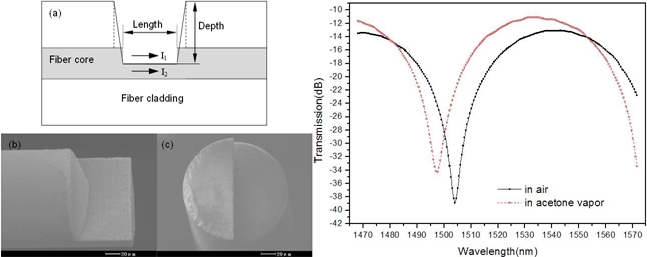A High-Quality Mach-Zehnder Interferometer Fiber Sensor by Femtosecond Laser One-Step Processing
Abstract
: During new fiber sensor development experiments, an easy-to-fabricate simple sensing structure with a trench and partially ablated fiber core is fabricated by using an 800 nm 35 fs 1 kHz laser. It is demonstrated that the structure forms a Mach-Zehnder interferometer (MZI) with the interference between the laser light passing through the air in the trench cavity and that in the remained fiber core. The fringe visibilities are all more than 25 dB. The transmission spectra vary with the femtosecond (fs) laser ablation scanning cycle. The free spectral range (FSR) decreases as the trench length increases. The MZI structure is of very high fabrication and sensing repeatability. The sensing mechanism is theoretically discussed, which is in agreement with experiments. The test sensitivity for acetone vapor is about 104 nm/RIU, and the temperature sensitivity is 51.5 pm/°C at 200 ∼ 875 °C with a step of 25 °C.1. Introduction
Modified fiber substrates are widely used in sensors [1–4] and wavelength filters [5–7] through coupling with planar waveguides or resonators. With its advantages of small size, light weight, electromagnetic interference immunity, wide bandwidth, and low transmission loss an optical fiber is a preferred platform for micro-sensors. Furthermore, fiber optics are widely used to interface various optoelectronic components. There are three main ways of transforming a single-mode fiber into a desired component: (1) grinding by using abrasive powders [8]; (2) processing by using a femtosecond (fs) laser [9–11], and (3) etching with HF solution. Many transparent materials irradiated by fs laser pulses are ablated with property changes due to the strong nonlinear ionization and corresponding free electron generation [12,13]. Some Fabry-Perot interferometers have been successively fabricated in optical fibers with fs lasers and used for refractive index sensing [9,11,14]. The fiber optic localized plasmon resonance (FO-LPR) sensor is also reported in which D-shaped fibers engraved by a fs laser is adhered with Au nanoparticles [10,15]. A multi-d-shaped optical fiber for refractive index sensing in a communication grade multimode optical fiber is fabricated by using a fs laser [16].
In this study, a fs laser was used to fabricate fiber sensors, producing a MZI structure on fibers with exciting potentials in high-quality sensing of refractivity-sensitive parameters such as temperature, concentration, humidity, pressure, stress and strain. Characteristic transmission spectra demonstrate that the fringe visibilities are all more than 25 dB. Fifty tested samples demonstrate the high fabrication and sensing repeatability of the simple sensing structure with some other advantages including reliability, compactness, robustness, high sensitivity, high flexibility, simple fabrication process and so on. The sensitivity for acetone vapor is about 104 nm/RIU (refractive index unit), and the temperature sensitivity is 51.5 pm/°C at 200 ∼ 875 °C with a step of 25 °C.
2. Fiber Sensor Fabrication
The scheme of the fiber sensor fabrication system using a fs laser is shown in Figure 1. The central wavelength, pulse width and repetition rate of the fs laser (Spectra-Physics, Inc.) are 800 nm, 35 fs and 1 kHz, respectively.
The laser pulse energy is attenuated through a half-wave plate and a polarizer to less than 50 μJ. Then, several neutral density filters are applied to reduce the pulse energy to less than 600 nJ before the objective lens. The attenuated fs laser beam is focused by an NA = 0.45 objective lens. The diameters of the single-mode fiber core and cladding are 8.2 μm and 125 μm respectively. The effective refractive index of the fundamental mode at 1,550 nm is 1.4682, and the calculated physical refractive indices of the fiber core and the cladding are about 1.4712 and 1.4659 respectively. A detection system (Agilent 8163B) consisting of a tunable laser and an optical power meter is employed to monitor the transmission spectra by wavelength sweeping. Figure 2 shows the side-ablated structure (an in-line trench) on the single-mode fiber with a length of about 75 μm. During by fs laser processing of fibers, nitrogen gas is used to blow off debris.
The transmission spectra of the side-ablated fiber were real-time tested during the fs laser fabrication process. The tunable laser continuously scans through its wavelength range (1,465–1,575 nm) at the rate of 0.5 nm per step. In each scanning cycle of fs laser ablation, a layer in x-y plane (as shown in Figure 1) is exposed to laser irradiation. Transmission spectra evolutions of structures from the 1st scanning cycle to the 8th scanning cycle are shown in Figure 3. The transmission spectra of the processed fiber keep changing in each processing cycle by fs laser ablation. In the 1st scanning cycle, the ablation depth is about 60 μm, which results in an attenuation band with a relatively low loss. The processing cycle is repeated eight times at the same depth. The losses of the attenuation bands increase from the 1st scanning cycle to the maximum at the 5th scanning cycle and then decrease from the 6th to the 8th cycle. The interference dip wavelength shifts during the ablation processes while FSR nearly keeps constant. From the 1st cycle to the 8th cycle, debris decreases gradually. Fifty fabricated samples demonstrate high repeatability of the trench structure and its sensing properties.
3. Results and Discussion
Fifty MZI fiber sensors are fabricated with the same trench depth of 60 μm but different lengths of 50, 65, 80, 100 and 115 μm. As shown in Figure 4, the fringe visibilities of the processed fibers are all greater than 25 dB. The background loss increases as the trench length increases and it is greater than 11 dB in all the cases, which is similar to the previously reported experiment [1]. The relatively high loss may be mainly due to the light scattering at the laser-ablated surface [11]. At the trench lengths of 50, 65, 80, 100 and 115 μm, the FSRs are about 101, 74, 64, 53.5 and 38 nm, respectively. This indicates that FSR decreases as the trench length increases, which implies more interference orders at longer trench lengths.
The fabricated structure forms a MZI whose two main light transmission paths are (1) the remaining D-type fiber core; and (2) the cavity in the trench. The interference intensity is expressed by [17]:
According to Equation (1), the phase difference of two adjacent minimum interference signals is 2π. Therefore:
Thus, the trench length is:
Gas sensing tests in air and acetone vapor were conducted. The sensor with a trench length of about 80 μm was put into a sealed stainless steel tube. The inner diameter and the length of the stainless steel are about 1 cm and 20 cm, respectively. The sensor transmission spectrum in air at room temperature is shown in Figure 5.
Then, 1.5 mL acetone was injected into the stainless tube. The transmission spectrum of the sensor in the acetone vapor was measured at room temperature. The spectrum scanning procedure is repeated several times until there is no obvious change compared with the preceding ones and the final sensor spectrum in acetone vapor is also shown in Figure 5. The refractive index of acetone vapor is greater than that of air, between which the difference is on the order of magnitude of 10−4 RIU. Compared with the results in air, the interference dip wavelength shift in acetone vapor is about 6.5 nm. The sensitivity is about 104 nm/RIU for acetone vapor.
Temperature measurements were also conducted by using the proposed fiber sensor. The sensor with a trench length of about 85 μm was selected. The temperature changes from 200 °C to 875 °C at a step of 25 °C. The interference dip wavelength shows a red shift with the increase of the temperature, as shown in Figure 6. It is mainly due to the change of Δneff or the effective refractive index change of the D-type fiber caused by the temperature variation. The temperature sensitivity estimated by least square linear fitting is 51.5 pm/°C.
4. Conclusions
This paper reports a MZI sensor ablated by fs laser pulses in single-mode fibers, which demonstrates exciting high-quality for both temperature and chemical sensing. For 50 processed samples, the sensing structure showed very high fabrication and sensing repeatability, and structures with the desired proprieties are successfully obtained in every experiment. The sensing mechanism is discussed theoretically, and is in agreement with the experimental results. The fringe visibility of the structure is more than 25 dB. The sensitivity for acetone vapor sensing is about 104 nm/RIU. The sensor was applied for high temperature measurements with a sensitivity of 51.5 pm/°C at 200 ∼ 875 °C.
Acknowledgments
This research is supported by the National Natural Science Foundation of China (Grant No. 90923039 and 50705009) and 863 of Ministry of Science and Technology of China (Grant No. 2008AA03Z301).
References
- Andreev, A.T.; Zafirova, B.S.; Karakoleva, E.I. Single-mode fiber polished into the core as a sensor element. Sens. Actuat. A-Phys 1998, 64, 209–212. [Google Scholar]
- Sohn, K.R.; Kim, K.T.; Song, J.W. Optical fiber sensor for water detection using a side-polished fiber coupler with a planar glass-overlay-waveguide. Sens. Actuat. A-Phys 2002, 101, 137–142. [Google Scholar]
- Tan, W.; Lei, S.; Chen, X. Modeling of an optical sensor based on Whispering Gallery Modes (WGMs) on the surface guiding layer of glass filaments. Sensors 2008, 8, 6761–6768. [Google Scholar]
- Sun, H.; Pyajt, A.; Luo, J.; Shi, Z.; Hau, S.; Jen, A.K.Y.; Dalton, L.R.; Chen, A. All-dielectric electrooptic sensor based on a polymer microresonator coupled side-polished optical fiber. IEEE Sens. J 2007, 7, 515–524. [Google Scholar]
- McCallion, K.; Johnstone, W.; Fawcett, G. Tunable in-line fiber-optic bandpass filter. Opt. Lett 1994, 19, 542–544. [Google Scholar]
- McCallion, K.; Creaney, S.; Madden, I.; Johnstone, W. A tunable fiber-optic bandpass filter based on polished fiber to planar waveguide coupling techniques. Opt. Fiber Technol 1995, 1, 271–277. [Google Scholar]
- Chen, N.K.; Chi, S.; Tseng, S.M. Wideband tunable fiber short-pass filter based on side-polished fiberwith dispersive polymer overlay. Opt. Lett 2004, 29, 2219–2221. [Google Scholar]
- Tseng, S.M.; Chen, C.L. Side-polished fibers. Appl. Opt 1992, 31, 3438–3447. [Google Scholar]
- Rao, Y.J.; Deng, M.; Duan, D.W.; Yang, X.C.; Zhu, T.; Cheng, G.H. Micro fabry-perot interferometers in silica fibers machined by femtosecond laser. Opt. Express 2007, 15, 14123–14128. [Google Scholar]
- Chen, C.H.; Chao, T.C.; Li, W.Y.; Shen, W.C.; Cheng, C.W.; Tang, J.L.; Chau, L.K.; Wu, W.T. Novel D-type fiber optic localized plasmon resonance sensor realized by femtosecond laser engraving. J. Laser Micro/Nano Eng 2010, 5, 1–5. [Google Scholar]
- Wei, T.; Han, Y.; Tsai, H.L.; Xiao, H. Miniaturized fiber inline Fabry-Perot interferometer fabricated with a femtosecond laser. Opt. Lett 2008, 33, 536–538. [Google Scholar]
- Jiang, L.; Tsai, H.L. Repeatable nanostructures in dielectrics by femtosecond laser pulse trains. Appl. Phys. Lett 2005, 87, 151104–151106. [Google Scholar]
- Lin, C.H.; Jiang, L.; Zhou, J.; Xiao, H.; Chen, S.J.; Tsai, H.L. Laser-treated substrate with nanoparticles for surface-enhanced Raman scattering. Opt. Lett 2010, 35, 941–943. [Google Scholar]
- Wei, T.; Han, Y.; Li, Y.; Tsai, H.L.; Xiao, H. Temperature-insensitive miniaturized fiber inline Fabry-Perot interferometer for highly sensitive refractive index measurement. Opt. Express 2008, 16, 5764–5769. [Google Scholar]
- Chen, C.H.; Tsao, T.C.; Li, W.Y.; Shen, W.C.; Cheng, C.W.; Tang, J.L.; Jen, C.P.; Chau, L.K.; Wu, W.T. Novel U-shape gold nanoparticles-modified optical fiber for localized plasmon resonance chemical sensing. Microsyst. Technol 2010, 16, 1207–1214. [Google Scholar]
- Chen, C.H.; Tsao, T.C.; Tang, J.L.; Wu, W.T. A multi-D-shaped optical fiber for refractive index sensing. Sensors 2010, 10, 4794–4804. [Google Scholar]
- Jung, Y.; Lee, S.; Lee, B.H.; Oh, K. Ultracompact in-line broadband Mach-Zehnder interferometer using a composite leaky hollow-optical-fiber waveguide. Opt. Lett 2008, 33, 2934–2936. [Google Scholar]
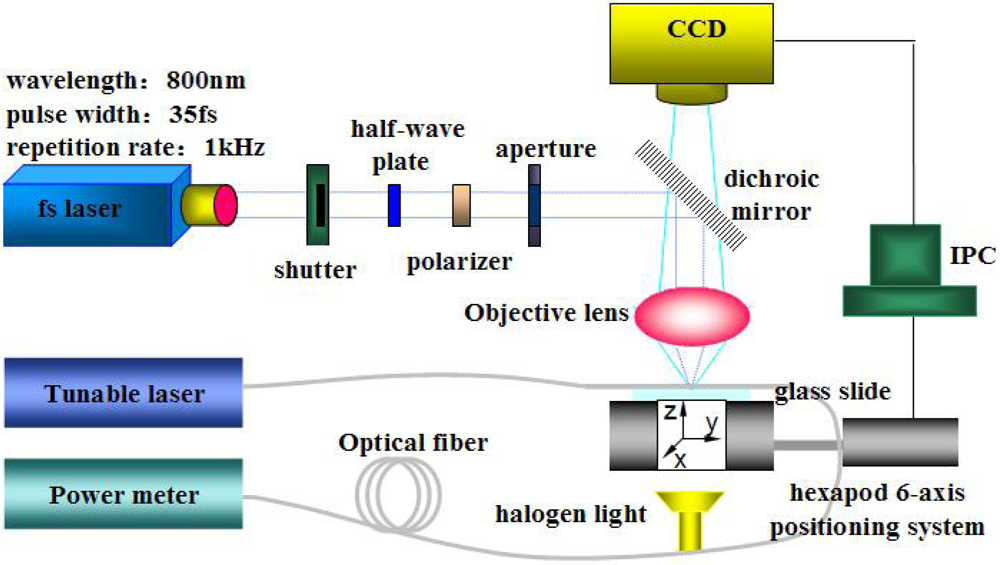

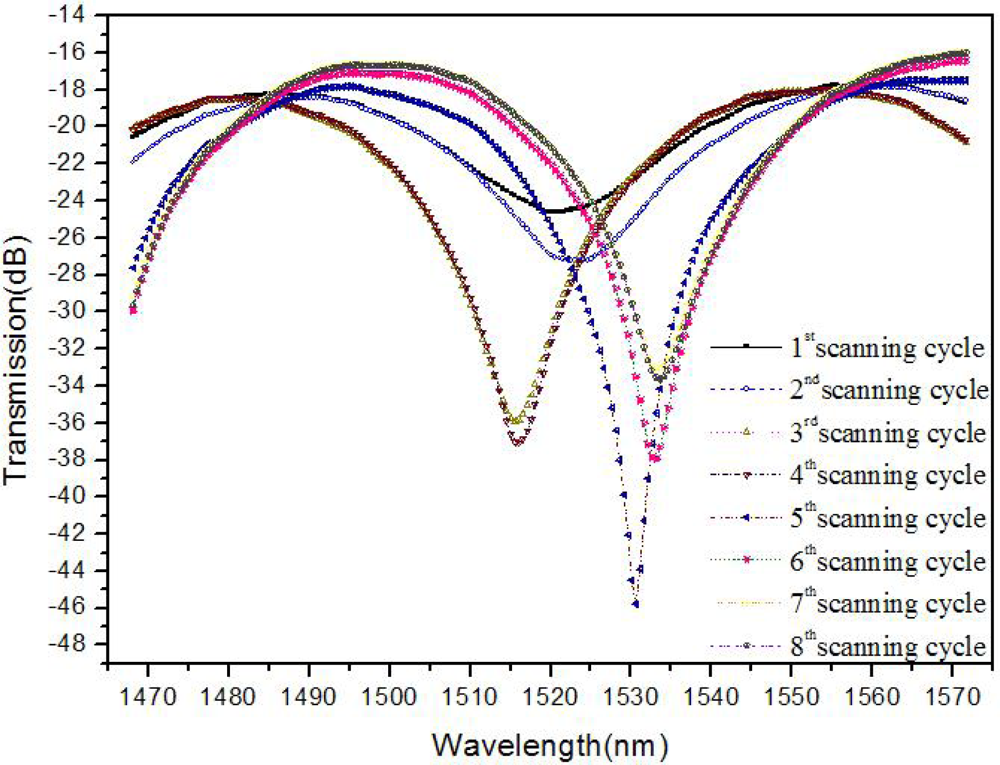
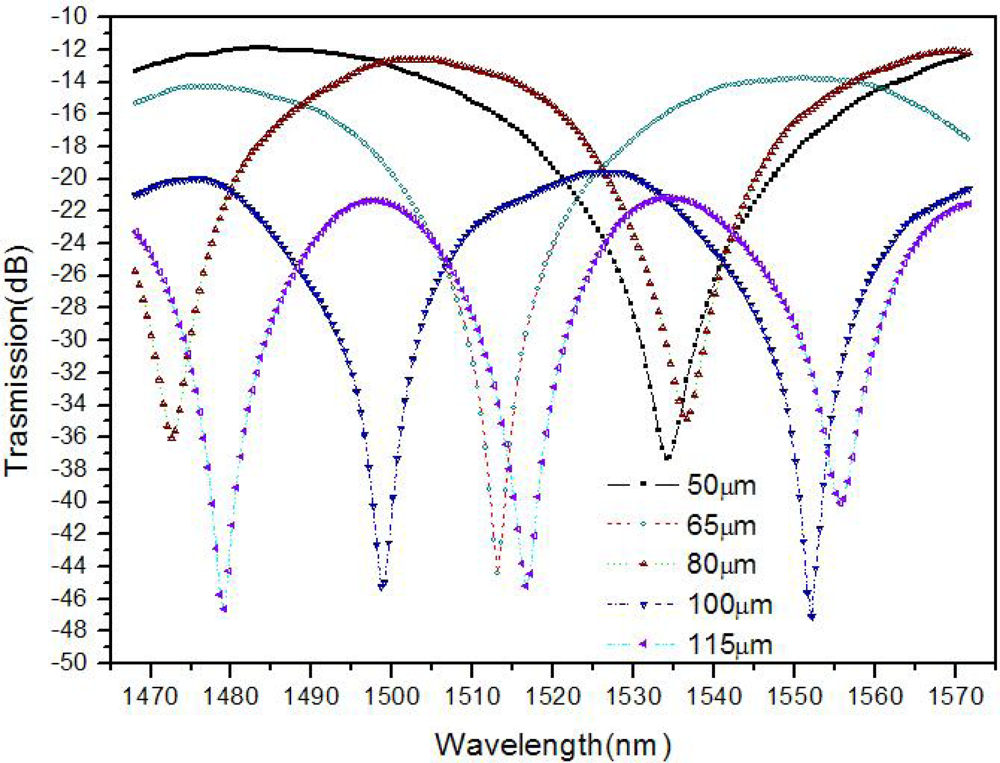
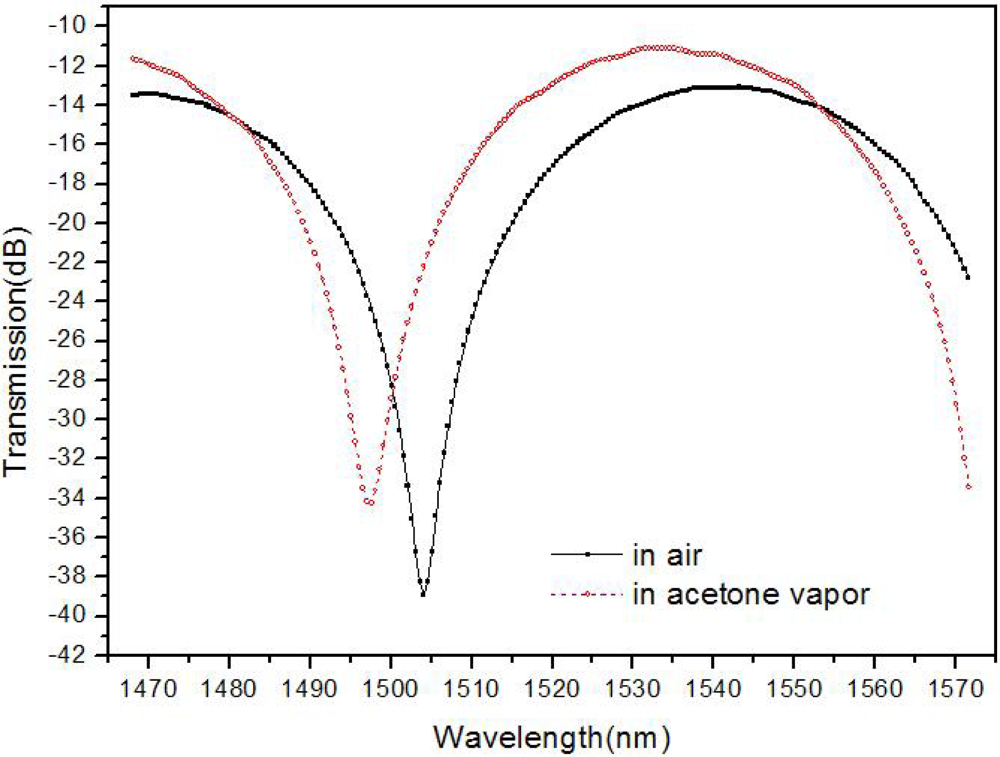
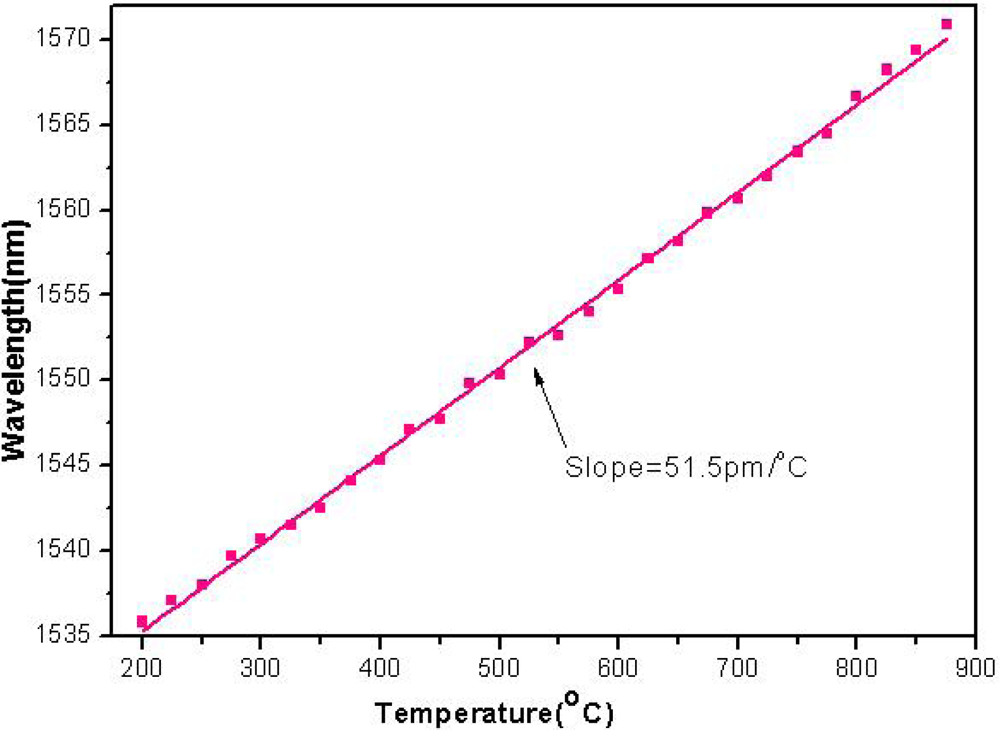
© 2011 by the authors; licensee MDPI, Basel, Switzerland. This article is an open access article distributed under the terms and conditions of the Creative Commons Attribution license (http://creativecommons.org/licenses/by/3.0/).
Share and Cite
Zhao, L.; Jiang, L.; Wang, S.; Xiao, H.; Lu, Y.; Tsai, H.-L. A High-Quality Mach-Zehnder Interferometer Fiber Sensor by Femtosecond Laser One-Step Processing. Sensors 2011, 11, 54-61. https://doi.org/10.3390/s110100054
Zhao L, Jiang L, Wang S, Xiao H, Lu Y, Tsai H-L. A High-Quality Mach-Zehnder Interferometer Fiber Sensor by Femtosecond Laser One-Step Processing. Sensors. 2011; 11(1):54-61. https://doi.org/10.3390/s110100054
Chicago/Turabian StyleZhao, Longjiang, Lan Jiang, Sumei Wang, Hai Xiao, Yongfeng Lu, and Hai-Lung Tsai. 2011. "A High-Quality Mach-Zehnder Interferometer Fiber Sensor by Femtosecond Laser One-Step Processing" Sensors 11, no. 1: 54-61. https://doi.org/10.3390/s110100054



